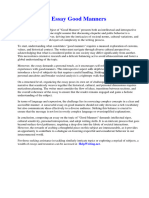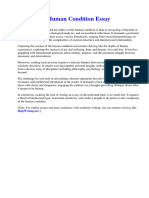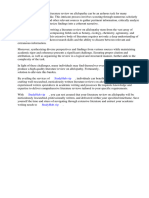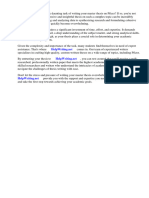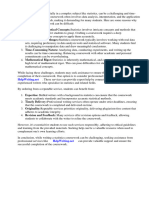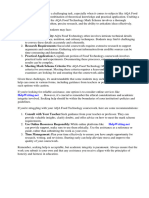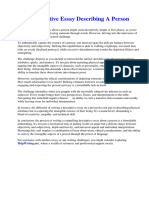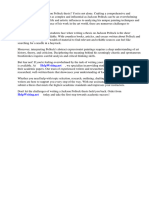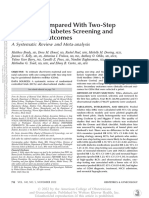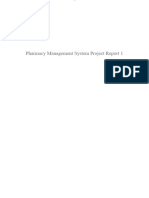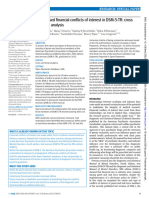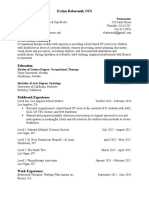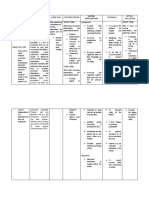Crafting a dissertation on the topic of drug normalization is an arduous task that demands
comprehensive research, critical analysis, and precise articulation. Delving into the complexities of
societal attitudes, legislative frameworks, and public health implications requires a deep
understanding of interdisciplinary fields such as sociology, psychology, criminology, and public
policy.
The process of researching and compiling data can be overwhelming, as scholars navigate through
vast amounts of literature, statistical analyses, and case studies. Moreover, formulating a coherent
argument and presenting original insights amidst a sea of existing research poses a significant
challenge.
For many students, balancing the demands of writing a dissertation with other academic,
professional, and personal commitments can be daunting. Time constraints, academic pressure, and
writer's block are common obstacles that can hinder progress and lead to frustration.
In such circumstances, seeking professional assistance can be invaluable. ⇒ HelpWriting.net ⇔
offers expert guidance and support to students embarking on the journey of writing their dissertation
on drug normalization. Our team of experienced academic writers specializes in crafting high-quality
dissertations that adhere to rigorous academic standards and exceed expectations.
By entrusting your dissertation to ⇒ HelpWriting.net ⇔, you can alleviate the stress and
uncertainty associated with the writing process. Our dedicated writers will work closely with you to
understand your research objectives, refine your arguments, and ensure that your dissertation is a
compelling and authoritative contribution to the field.
Don't let the challenges of writing a dissertation deter you from pursuing your academic goals. With
⇒ HelpWriting.net ⇔ by your side, you can confidently navigate the complexities of your research
topic and emerge with a dissertation that showcases your expertise and scholarly prowess.
�Of the 77 drugs, 34 are administered with weight-based dosing, 12 use body surface area (BSA)-
based dosing, and 31 are given in fixed doses. 7 (See Box 3-1 for a brief explanation of why certain
fixed-dose drugs in single-dose vials could have portions discarded.) As discussed in previous
chapters, in this report, weight-based drugs refers to drugs that are dosed either by weight or by
BSA. You can download the paper by clicking the button above. Second, the estimates are only
nominal values that are based on the assumption that every ounce in a vial has an equal value and
that the value of an ounce administered to treat a patient is equal to the value of an ounce of drug
that is discarded. Corporate Level, Business Unit Level and Functional Level. Also, you can type in
a page number and press Enter to go directly to that page in the book. Register for a free account to
start saving and receiving special member only perks. Primary sources of information for selecting
OTCs and dietary supplements vary according to the population group. In 1990, the Omnibus
Budget Reconciliation Act (OBRA) confirmed that “medically accepted indication” includes off-
label use and should be supported by one of the following. From the 77 Part B drugs, 45 weight-
based drugs were found in the claims of patients who responded to the HRA survey. The remainder
of this section addresses the former (research and development; regulatory review; and manufacture,
distribution, and marketing). To browse Academia.edu and the wider internet faster and more
securely, please take a few seconds to upgrade your browser. Medication infusion devices, such as
smart pumps and patient-controlled analgesia machines, go a step further and maintain a record not
only of medications administered, but also of errors that may have occurred. Secondary stakeholders
include accrediting, patient safety, and quality improvement organizations; medical journal editors;
and the general media. For example, few drug products used for neonatal and pediatric patients have
been tested in randomized controlled trials in these populations. Adverse events involving vaccines
are reported passively through the Vaccine Adverse Event Reporting System (VAERS), maintained
by the CDC jointly with the FDA. The MAR also serves as a reference in the event of a medication
error (Gladstone, 1995; Wakefield et al., 1999). In some cases, third-party payers have reviewed the
MAR to look for inconsistencies and gaps in treatment and to find evidence for denying payment.
First, the information from the JW modifier is insufficient to provide accurate estimates of the
amounts of drugs that are discarded. For example, greater risk may be tolerated for a drug designed
to treat a life-threatening illness than for one designed to treat the common cold. However, this
percentage was based on the underused JW modifier. Black Chambers Free Central Georgia
Coalition of Black Businesses Free North Ga Business Alliance Free Northwest Ga. Consider, for
example, onabotulinumtoxinA, which is available in 50-unit (1.25 mL), 100-unit, or 200-unit single-
dose vials. The key points at which important interventions can be implemented are identified in
Figure 2-1. If the manufacturer has failed to respond to requests for labeling changes and patient
harm recurs as a result of related errors, the FDA seeks to bring about the required changes through
negotiation. Strict regulations and guidance generally prohibit or severely restrict the acceptable time
frame for sharing medication from single-dose vials among patients, and so the unused amount will
typically be discarded. Because these studies are larger and longer in duration, the results. B.By
changing the structure of a compound, scientists can give it different properties. Add Links Send
readers directly to specific items or pages with shopping and web links. This chapter provides an
overview of the major components of the drug system and the points that might lead directly or
indirectly to errors as well as opportunities for learning, recovery, and improvement. Download Free
PDF View PDF Drugs: Education, Prevention and Policy 'I like money, I like many things'. Also,
information on discarded drugs from Medicare Advantage plans and other commercial insurance
plans are currently not available.
�The study in this document will also include a measurement of recreational use of these specific
drugs along with others, in order to identify of which is most common, what other drugs most users
have tried, followed by an evaluation into their reasoning’s why, and further analysis with regards to
where the consumption takes place. The FDA does not approve every use for which a drug may be
prescribed by a clinician, only the use evaluated during its clinical trial. Off-label prescribing occurs
most frequently with pediatric, oncology, obstetric, and. In previous studies, it is possible that less
common side. Normalisation has become an indicator of “ changes in social behaviour and cultural
perspectives”, meaning that the opinion about some illicit drugs has changed within the youth culture
which in return affects their social behaviour as they do not think that using the drug is wrong or
immoral. Thus, effective clinicians rely on best practices as appropriate for a given patient, yet they
maintain the freedom to make choices that science cannot guide, such as those based on relationships
and observation. Constant updating of drug information is particularly critical to patient safety given
the limited data available when medications enter the market and the amount of new data on
medications already in use among the population. If it is complete, the review team has 6 to 10
months to make a decision on. One study found that about one-third of oncology prescriptions were
off-label, and more than 50 percent of oncology patients received at least one drug off-label (NCI,
2004). Without attention to this issue, for instance, a liquid intended for oral dosing might be
administered intravenously. Berridge, 1978 found her evidence by drawing on the diaries of calkins
to show how drug use was normalised within everyday life. Kaiser Family Foundation. (accessed
October 13, 2020). This will facilitate assessment of the positive, neutral, or negative impact of
reporting systems in the near term. One study found that only 38 percent of patients correctly
administered medications when instructed to do so every 6 hours; most thought they were to
consume the medication every 6 hours when awake and thus to take three rather than four doses
(Madlon-Kay and Mosch, 2000). Errors in medication delivery are the largest single category of
medical errors in health care (IOM, 2000). Since then, boards of pharmacy in most states have come
to require some type of counseling for all patients (NABP, 2004). The research only includes specific
drugs which are considered recreational. An FDA team assesses a product’s conformance to the
monograph, as well as to OTC labeling guidelines. In every setting in which care is
delivered—ambulatory care sites, hospitals, schools, workplace health sites, home health care, and
nursing homes—assessment and monitoring is a primary responsibility of licensed nurses (IOM,
2004b). The participants found that study designs often are not tailored to the pharmacology of
potential new drugs and the patient populations that will use them, and frequently are not structured
to allow adequate evaluation of a broad range of doses. Thus, nurses often must respond to the
health crises of some patients, which distract them from timely and thoughtful medication
administration to others. First, the information from the JW modifier is insufficient to provide
accurate estimates of the amounts of drugs that are discarded. Preventing Medication Errors is the
newest volume in the series. The researchers categorized modifier compliance into three levels: none,
partial, and full. In 2004, 215 prescription and 71 OTC drugs were recalled because of
manufacturing and distribution problems or serious adverse reactions (FDA, 2004a). Even if the
correct decisions are made in determining the medication regimen, poor communication of
prescription orders in any format (written, oral, electronic) can lead to serious adverse drug events
(Cohen, 2000; USP, 2004). If the Phase I and II trials are successful, the sponsor may apply for
Treatment IND status to provide promising drugs to patients with a life-threatening disease (e.g.,
AIDS) if no comparable therapy exists or the patients cannot participate in clinical studies. The
modifier can be used for any single-dose vial in which some drug is discarded, regardless of whether
the drug is administered in a fixed dose or a dose based on weight. For example, drug shortages or
discontinuations in certain dosages force patients to switch their prescription to another drug that
may not be as appropriate for them or to resort to potentially unsafe practices, such as manipulating
doses manually (e.g., tablet cutting) or purchasing from unknown Internet vendors. Literature review
When considering the concepts of “ normalisation” and “ recreational drug use”, it is crucial to first
establish what is here meant by these terms in actuality.
�Managerial responsibilities and decision-making concerns at corporate and SBU levels At SBU level,
trade-off between operational and strategic responsibilities Within SBUs, strategic role of functional
areas. Despite interest in analyzing the data from reporting systems and providing feedback that can
be used to improve patient safety, states have found barriers to analysis and feedback (Rosenthal and
Booth, 2005). While computerized provider order entry systems have been promoted as the primary
method for reducing errors in transcription because they eliminate handwritten prescriptions, other
factors, such as improved processes for drug naming to minimize look-alike, sound-alike names, also
could improve the transcription process (see Chapter 6 ). Following a confirmation signal, the nurse
administers the medication. If it is complete, the review team has 6 to 10 months to make a decision
on. Literature review When considering the concepts of “ normalisation” and “ recreational drug
use”, it is crucial to first establish what is here meant by these terms in actuality. Trends in drug
development over the past few decades have led to significant improvements in study designs,
reducing the incidence of incorrect conclusions concerning dosage, efficacy, and safety while
deepening understanding of how the molecular structures of potential new drugs interact with
specific human cellular structures. These changes through adolescence support Coleman’s
sociological theory that youth culture experiment in different social aspects of life, such as
subcultures and trends or sexualities and in this case drugs. A survey of oncologists found that 60
percent of these clinicians prescribe off-label for cancer patients who may require drugs approved for
a different type of cancer or a different disease, or at different dosages, frequencies, or duration from
those approved (NCI, 2004). Multiple logistic regression was used to analyse the association between
sociodemographic and risk behaviour characteristics and positive attitudes towards illicit drugs. You
can use this sample for research and reference purposes to help create your own paper. This is due in
part to the growing number of prescription drugs that are administered in variable doses (rather than
fixed or flat doses) based on a patient's weight or body size. Because these studies are larger and
longer in duration, the results. The second section of the chapter addresses medication use. Then,
they multiplied the percentage of discarded drug units with the total net pay or out-of-pocket cost
for the discarded drug amount for payers and for patients. Both approaches rely on manufacturers to
collect, evaluate, and report data on their own products (Fontanarosa et al., 2004). Therefore this
dissertation was a small exploratory study into student attitudes towards illicit drug use. Furthermore,
Bebinger (2017) states that the US merchants bought their opium from the Turks, rather than the
Indians and returned from China with silks and tea. The researchers abstracted the recommended
dosage and vial size for a drug to treat a specific disease based on IBM Micromedex and collected
the claims of these 45 drugs from the 2017 MarketScan data. In terms of mail order pharmacies,
counseling is generally available as requested by telephone. To address these barriers, in May 2005
the National Academy for State Health Policy convened a meeting of stakeholders in reporting
systems to identify mechanisms and tools for improving reporting and feedback (Rosenthal and
Booth, 2005). Whilst all were thought of as a form of ephemeral drug taking, they were also known
as behaviours found in the minority groups of the populations, and almost always referred to as
deviant. These barriers are discussed extensively in Chapter 4. For example, few drug products used
for neonatal and pediatric patients have been tested in randomized controlled trials in these
populations. Without data on health outcomes, extrapolation from the carefully selected patient
populations used in clinical trials to patient populations seen in typical practice settings and from the
patient population used in a trial to another patient population introduces uncertainty (Teutsch et al.,
2005). The researchers made presentations to the full committee during closed deliberations and
received guidance from the full committee, and the committee validated the findings from the
analyses, which are summarized below. The 31 drugs classified as fixed dose had the JW modifier
associated with them. Errors occur from overdosing or underdosing as a result of inadequate
instructions and use of inconsistent or improper measuring devices. Washington, DC: IOM
Committee on Identifying and Preventing Medication Errors. PBMs are third-party entities that
evolved from claims administration and mail order pharmacies into organizations that also provide a
range of drug benefit and clinical-based services (HPA, 2003).
�Development and Validation of a New Instrument (PAOD) Adham salhi Download Free PDF View
PDF A Study on the Marxist Feminist Philosophy and Patriarchy in Bangladesh Society Arifatul
kibria Download Free PDF View PDF Ankara Universitesi t?p fakultesi mecmuas. A survey of
oncologists found that 60 percent of these clinicians prescribe off-label for cancer patients who may
require drugs approved for a different type of cancer or a different disease, or at different dosages,
frequencies, or duration from those approved (NCI, 2004). However, when a young person leisurely
uses recreational drugs such as ecstasy or cannabis, this does not necessarily result in in person to
undergo criminal activities or offences. During this time the Chinese were stigmatised as being a less
human type of race which ignited the anti-Chinese campaign with government, and medical
professionals exerting these views around the US. Adobe Express Go from Adobe Express creation
to Issuu publication. Early data indicate that unintentional overdoses were the most common cause
of ADEs (39 percent), and that two drugs (i.e., warfarin and insulin) were associated with 16 percent
of all ADEs and 33 percent of ADEs in patients over age 50 (Budnitz et al., 2005). The drugs with
the highest percentage of claims with the JW modifier fell into the following classes: oncology (30
drugs, with an average of 18 percent of claims having the JW modifier), rheumatology (12 drugs, 16
percent), and respiratory (6 drugs, 5 percent). Berridge (1977) spoke about the rampant use of opium
in the fenlands of Britain, an area that encompasses, Cambridgeshire, Norfolk, Lincolnshire and
Suffolk. Pharmacists also may play a role in assessing beneficial or adverse effects during inpatient
care, as may patients (including family members) in ambulatory and self-care. Conversely, the side
effects of cancer drugs can vary depending on the type of cancer being treated, such that the risk of
an adverse event or reaction can increase when the side effects of an off-label use are unknown.
Bethesda, MD: American Society of Health System Pharmacists. Activities associated with
preparation present the greatest opportunity for error within the pharmacy (Manasse and Thompson,
2005). Washington, DC: National Archives and Records Administration. In 1990, the Omnibus
Budget Reconciliation Act (OBRA) confirmed that “medically accepted indication” includes off-
label use and should be supported by one of the following. Investor Presentation Medirom
Healthcare Technologies Inc. The analysis included the mean, minimum, and maximum discarded
percentage for each drug. 23 The mean discarded percentage ranged from less than 1 percent to close
to 40 percent. Strategic Planning. Strategic planning has taken on new importance in today’s world
of globalization, deregulation, advancing technology, and changing demographics, and lifestyles.
Consequently, drugs must continue to be evaluated as they are used in clinical settings to detect less
frequent but significant adverse side effects, long-term effects, or effects in different patient
populations. The researchers categorized modifier compliance into three levels: none, partial, and full.
The only reporting program whose effect on safety has been demonstrated by a controlled trial is the
National Nosocomial Infection Survey (Haley et al., 1985). Many reporting programs distribute
newsletters or advisories to alert providers of hazardous situations and possible preventive measures.
There was a very low correlation between total spending on a drug and percentage of claims with the
JW modifier. 10 Among those drugs in the sample for which at least 1 percent of claims used the JW
modifier (40 of 77 drugs), there were few consistent patterns or substantial differences in terms of
use of the modifier across regions, 11 nor did the use of the JW modifier in urban versus rural areas
follow any sort of consistent pattern. 12. The percentage of claims with the JW modifier was
substantially higher among weight-based (26.9 percent in 2018) than fixed-dose (1.4 percent) drugs
(see Table 3-1 ). 9 JW modifier use was relatively concentrated, with 21 of the 77 drugs having over
25 percent of claims with the JW modifier. To better understand the financial impact of discarded
drugs, the researchers conducted an additional analysis that used patients’ actual weight and height
to determine the discarded percentage of their drugs. Inspections are a significant step in the review
process, aimed at minimizing consumers’ exposure to adulterated drug products. To get a sense of
just how low, the analysis examined the top five drugs in terms of spending associated with claims
with the JW modifier and estimated the amount of unreported spending on discarded drugs. This
will be a very focused, informative, dynamic experience. The 31 drugs classified as fixed dose had
the JW modifier associated with them. Patients, primary health care providers, health care
�organizations, purchasers of group health care, legislators, and those affiliated with providing
medications and medication- related products and services will benefit from this guide to reducing
medication errors. Medication infusion devices, such as smart pumps and patient-controlled analgesia
machines, go a step further and maintain a record not only of medications administered, but also of
errors that may have occurred. Click here to buy this book in print or download it as a free PDF, if
available.
�Statistics Make data-driven decisions to drive reader engagement, subscriptions, and campaigns.
About 26 percent of pharmacists’ time is spent dealing with issues (interruptions) related to third
parties and miscellaneous administrative tasks (NACDS, 1999). Furthermore, Bebinger (2017) states
that the US merchants bought their opium from the Turks, rather than the Indians and returned from
China with silks and tea. Risks that are medically important but delayed, less frequent than 1 in
1,000 administrations, or not evenly distributed across the population may not be revealed prior to
marketing (Nies, 2001). As the developers design the clinical study, There are several steps and. A
study of 100 prescription orders dispensed in 1994 in community pharmacies in New Jersey, New
York, and Florida found that oral counseling had been provided to 64 patients, covering on average 3
of the 14 categories 11 (i.e., dosage, frequency of administration, drug or food interactions) of drug
information required by OBRA 1990 (Allan et al., 1995). Similar results were observed in a more
recent, larger eight-state study. For example, a heart monitor may detect an inappropriate change in
heart rate or rhythm after administration of a cardiac drug. All medications are typically documented
consistently in one place for ease of reference by the team of health care providers that may be
caring for a patient. Black Chamber Free Greater Albany Economic Alliance Free Heart of Ga. When
limiting the analysis to only weight-based drugs, findings from the analysis of MarketScan data
showed that the use of the JW modifier was even more concentrated than the pattern observed in
Medicare data. These drugs have narrower therapeutic indices, meaning there is less margin for error,
and the consequences of error may be more devastating (Cohen, 2000). However, the rising cost of
health care and prescription drugs, as well as other factors, has prompted the use of other methods to
bring drug products to pharmacies, consumers, and patients. Illicit drug use is frequently associated
with the youth culture, Robson (1994) points out that the most common time for using or trying
drugs is between the ages of eighteen and twenty-four. In 2017, 16.2 percent of the claims had the
JW modifier, and in 2018, 16.9 percent did. This finding suggests low compliance 8 with the CMS
mandate. Washington, DC: Consumer Healthcare Products Association. Most often this is the case:
medication errors are the result of a problem incurred during the prescribing, dispensing,
administration, or monitoring phases of the medication-use system. The remainder of this section
addresses the former (research and development; regulatory review; and manufacture, distribution,
and marketing). Data were analysed by applying the Bennett and Holloway categorization of the
drugs-crime link, with a focus on the concept of social exclusion as developed by Seddon. While
necessary, such methods can underscore the important differences between adults and children in
development and the metabolism and excretion of a particular drug, increasing the risk of an adverse
drug event (Christensen et al., 1999; Jong et al., 2001). Some drugs are now tested in pediatric
populations, but significant ethical concerns about such testing mean that off-label use of drugs will
continue to be necessary to meet the needs of these patients. The within-drug variation in the
discarded percentage highlights the challenges of adhering to the JW modifier mandate, as providers
will need to make the calculation for each patient based on weight at the time of treatment, which
can fluctuate from one chemotherapy administration to another. In addition, states often lack the
clinical expertise to analyze the data. All of these reporting systems currently utilize their own
reporting formats. This particular concern should be alleviated with the recent passage of the Patient
Safety and Quality Improvement Act of 2005 (P.L. 109-41). The act promotes the establishment and
use of voluntary patient safety reporting systems, peer review protection from report disclosure
during legal proceedings, and protection of providers who report from professional retaliation. If
there is an alert, the nurse stops the process from going forward, preventing a potential medication
error. Errors occur with all types of medications (e.g., pre-. This then, as previously mentioned,
allowed for other social sciences to adapt and investigate the theory in their specialised fields, where
here specifically is relevant, Criminology and drugs. The following review will be focusing on how
historically, the concepts of normalisation and recreational drug use have been adopted into society
and to what extent they correlate with one another. The reliance on voluntary reports and the factors
that discourage reporting (e.g., time pressures, fear of liability, and lack of perceived benefit) result in
significant underreporting of adverse outcomes and thus the inability to calculate true rates of such
�events (Fontanarosa et al., 2004). The reports also suffer from poor data quality, often including
inadequate documentation and detail, which limits the ability to establish causal relationships in the
analysis of the events. The central argument here is that globalisation has created issues for a post-
modernistic Britain in the form of an increased tolerance for drug use, which has been influenced by
consumption. The signs and symptoms of an adverse reaction may be unpredictable (e.g., a skin.







